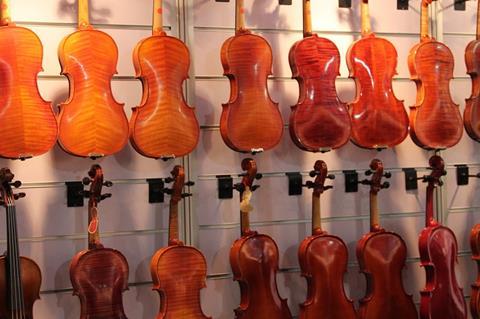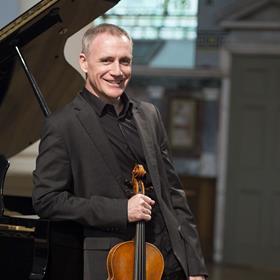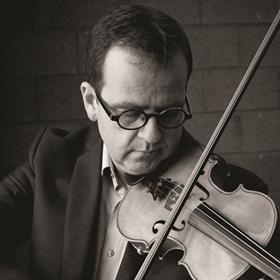What should parents think about when it comes to buying their child a full-sized instrument? As three seasoned tutors attest, there are many things to consider

The dilemma My twelve-year-old daughter, currently working towards her ABRSM Grade 5, has been playing on a 3/4-size violin but her new violin teacher recommends that we now ‘invest in’ a full-size instrument for her. The question is: should we really be spending thousands on a violin at this stage in her development, when she might decide in the future that she needs something with a different tone, or something more suited to her own playing style? On the other hand, we don’t want to get a cheap, inferior instrument that won’t allow her the scope for development she requires. I also wondered how much the choice of bow would influence her at this stage?

JUAN DROWN Choosing the right instrument and bow for a developing student is a complex business. It is also a very personal one, so shopping around and trying things out is as good a way to decide as following the advice of any expert.
If your daughter has been playing on an ordinary student instrument until now, then £1,000 will get her something that is considerably better in quality – more responsive with a more beautiful tone and greater variety of sound. It should be possible to get an instrument and a bow for this price which will do justice to her playing as it is now, and continue to work well for the next few years. For example, there are lots of modern Chinese violins in the £500–£1,000 range that are surprisingly good, and some European makes have also been impressive in this market recently. An upgrade may be appropriate at some point – say at around Grade 8.
I suggest that your next step would be to visit as many local dealers as you can and get your daughter to try out the violins and bows they have in stock in your price range (and don’t be tempted to try a violin that you know you can’t afford – that’s advice from personal experience!). Be sure to mention your teacher’s name while you are at the dealer’s shop. When you find a violin your daughter likes, don’t buy it immediately but take it on approval for a week or two, so that you can compare it with instruments from other places, and show it to your teacher or other players you know. It is also important that your daughter plays on it for a few days to get a proper impression.
This might sound like a lot of work, but remember you are spending a lot of money and you want to get the right instrument. Also, shopping for violins can be a lot of fun. Getting the right bow to go with the violin adds another dimension of complexity, I’m afraid, as the bow can have a profound effect on a violin’s sound.

HEIDI MANTERE The most important thing is to invest in an instrument with a good and suitable sound. How much you should invest is hard to say. If you are lucky, you might get both a violin and a bow within your price range, whatever that may be.
As a violin teacher, I think that students need to have an instrument they will enjoy playing for hours each day. It’s not a question of whose name is printed on the label, or anything else – it is the sound that matters most. Take your time while searching for a good instrument. Try them all out one by one, and for several days if you can. Make sure that the instrument is in good condition before you finally decide to buy it – you can always take it to a violin maker to get a second opinion.
Bear in mind that if your daughter is committed to playing the violin often and for long periods, and you keep it properly maintained, you can treat the purchase as an investment. A good violin becomes even better if it is played well and treated properly, and in due course, when it comes to moving up to another instrument, the dealer will likely accept the violin back in part-exchange.
For me, the quality of the bow is even more important than the violin. If you are looking for both a violin and a bow, try to test out as many different alternatives and combinations as possible (and make sure you have a chance to play them together for some time). If you feel the ‘marriage’ of violin and bow works, you will get the most out of practising and playing – and your audience (and violin teacher) will love it too.

DIRK LIEVENS There is no recipe for success when it comes to buying ‘a good instrument’ at ‘the right price’. However, whenever I buy a new instrument for myself, I keep four basic criteria in mind: budget, condition, sound quality and the maker’s name. If one of these falls short, the violin will likely be harder to sell when it comes to moving on.
If you buy an instrument for less than £500 you can expect to be selling it on for less than that in the future. For instruments above that price, I try to help my students find something that’s likely to retain or increase its value.
The instrument you buy must be in the best possible condition, otherwise there will undoubtedly be costs involved in having it mended, and no guarantee that it can be properly fixed. If you’re used to the sound of a certain violin, you need time to adapt to a new one (even if it’s better). Try the instrument in different rooms. Ask someone else to play it for you – listening to it from a distance makes a huge difference. And remember: take advice such as ‘it will sound better with good strings’ and ‘over time the quality of sound will improve’ with a pinch of salt.
The maker’s name (and fame) can make a big difference to its resale value, though be aware that often the identity of an instrument’s maker is unknown or false.
For a lower budget, think about buying an instrument that is partly handmade and partly built on a machine. These are well made and their sound is often very good. You could also consider buying a carbon-fibre bow – starting prices are not too high and in the long run it can make a good second bow. Finally, don’t forget to buy a firm, waterproof case.
This article was first published in the September 2016 issue of The Strad
Read: Ask the Experts: how to keep your instrument clean
Read: Ask the Experts: buying your first instrument at auction
Read: Ask the Experts: how to teach a group of violin students





























No comments yet